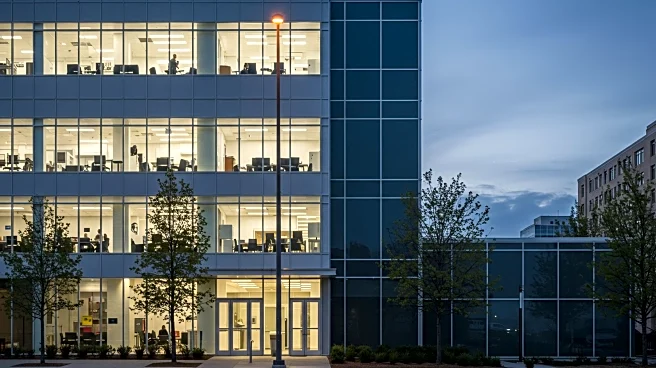What is the story about?
What's Happening?
The U.S. office market is experiencing a widening gap between prime and non-prime vacancy rates, according to CBRE's 2025 U.S. Real Estate Market Outlook Midyear Review. As of the second quarter of 2025, the prime office vacancy rate stands at 14.5%, which is 4.8 percentage points lower than the non-prime rate. This disparity is expected to grow due to a sustained preference for quality office spaces and limited new supply. The report also highlights a decline in the percentage of respondents who have achieved steady state in office use patterns, dropping to 61% from 64% last year. Despite these challenges, 38% of respondents anticipate an increase in office use over the next few years. The persistence of hybrid work models is affecting office vibrancy, with lower attendance days leading to less appealing office environments.
Why It's Important?
The bifurcation in office vacancy rates underscores the ongoing shift in corporate real estate strategies, with companies prioritizing high-quality spaces to attract employees back to the office. This trend could lead to increased demand for prime office locations, potentially driving up rental prices and impacting real estate investment decisions. The decline in steady state office use patterns suggests that companies are still navigating the complexities of hybrid work models, which could influence future workplace policies and design. As organizations seek to enhance office vibrancy, they may invest in amenities and technologies that foster collaboration and engagement, impacting the commercial real estate market and related industries.
What's Next?
Organizations are likely to continue exploring strategies to improve office attendance and vibrancy, such as implementing team synchronicity mandates to coordinate in-office days. As the gap between prime and non-prime vacancy rates widens, companies may face challenges in securing high-quality office spaces, prompting potential shifts in leasing strategies. The report indicates that occupiers expect growth in their office portfolios over the next three years, suggesting a continued focus on expanding and optimizing office environments to meet evolving workforce needs.
AI Generated Content
Do you find this article useful?














